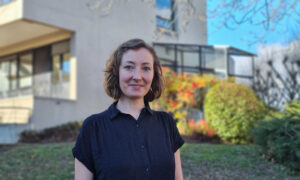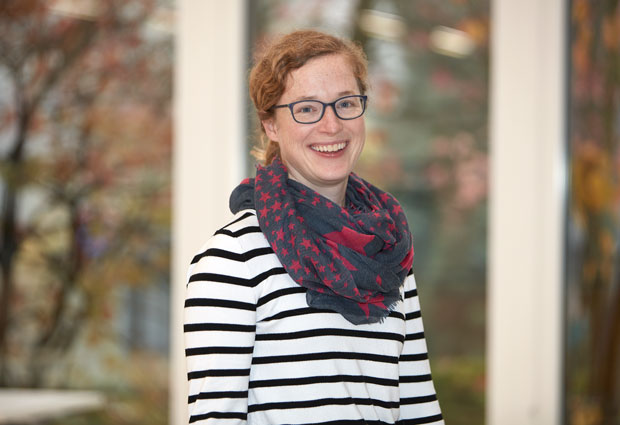
Read the latest Issue
New group leader based in Grenoble aims to unveil the mechanisms of RNA editing

In order for the cell to make sense of its genetic instructions, DNA is copied into RNA, which is then translated into proteins. This sounds very linear, but it’s not. I study RNA editing, a processing step which diversifies RNA sequences by deleting, adding or modifying parts of the RNA.
RNA editing is a complicated process carried out by large molecular machines that are assembled of many subunits made up of proteins. In the lab, we want first to study the structure – what these protein complexes look like – to then get to know their function. In some years, we will understand how these mechanisms work and, hopefully, be able to put them to use.
There is definitely a special spirit about EMBL
Trypanosoma brucei can change large parts of its RNA and has a very complicated RNA editing machinery. We want to understand how the different proteins implicated in the RNA editing process are structured to know their function and how they interact with each other. We are studying Trypanosoma because if we are able to understand its complicated machinery, we’ll be able to compare it to the mechanisms used by other organisms.
If we were able to control the RNA editing process in an organism, we might be able to quite specifically control which proteins result from gene activity without modifying the organism’s DNA. This is very interesting, but at a very early stage: one day we might be able to use RNA editing as a medical tool.
Inside the cell, there’s a complex called exosome that breaks up RNA. The exosome precisely trims certain RNAs and contributes to regular RNA turnover in the cell. But it can also degrade RNA completely in case there are mistakes in the RNA that lead to faulty proteins. So, you can imagine the exosome as a paper shredder, where the paper is RNA and the Ski complex is the hand that feeds the paper in. We have been investigating how the Ski complex helps the exosome with its task and we found evidence for the direct contact between ribosomes, the cellular protein factory, and the Ski complex. We think this is a sort of cellular quality control, for when a defective RNA molecule gets stuck in the ribosome and has to be removed and degraded.
It is good to be back to EMBL, I think this is a great place! EMBL’s Grenoble site is a small and lively European science hub. On the one hand, we have access to great European facilities: the synchrotron, electron microscopes, the high throughput crystallization facility – there’s everything you need to study protein structures! On the other hand, the site’s relatively small size encourages you to get out of your bubble, seek collaborations, invite external speakers and look behind the horizon. There’s definitely a special spirit about EMBL. The environment is open and collaborative, everyone gives stimulating input to everyone’s research – I hope to contribute and give ideas to all of them and soak up inspiration myself.
I want the people in my lab to be passionate about science and to love what they do
Becoming a group leader is quite a harsh transition. As students and postdocs, we are trained to read journals, do experiments and write papers. As a group leader, there’s a lot of management, organisation, interviewing and so on involved – a completely different set of tasks. Thankfully, the administrative staff at EMBL are extremely helpful, and they are very good at making life easier. I enjoy the new responsibilities, but I have to confess that I want to spend as much time as I can in the lab doing experiments!
I want the people in my lab to be passionate about science and to love what they do. I learnt from my own experience that there’re times when everything goes well and the experiments are successful. But there are also periods when progress feels slow-moving, and that’s when you need to be resilient – it takes will power and passion for what you do. There are ups and downs, so you have to love what you do and really want it.
Looking for past print editions of EMBLetc.? Browse our archive, going back 20 years.
EMBLetc. archive